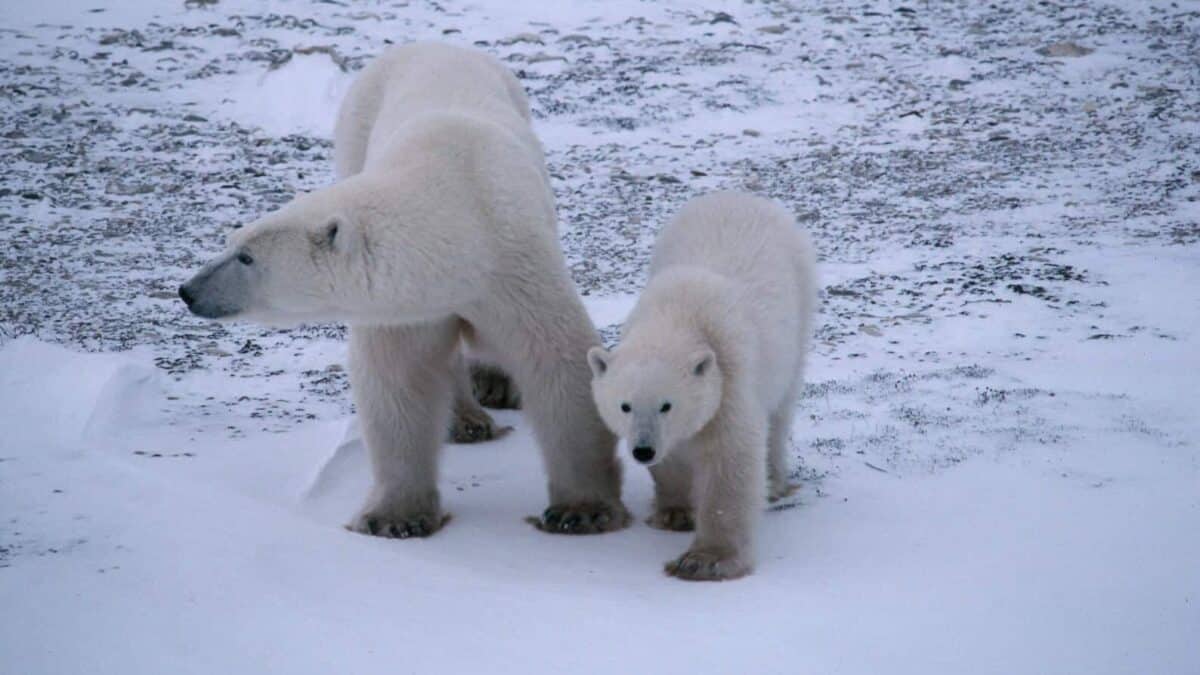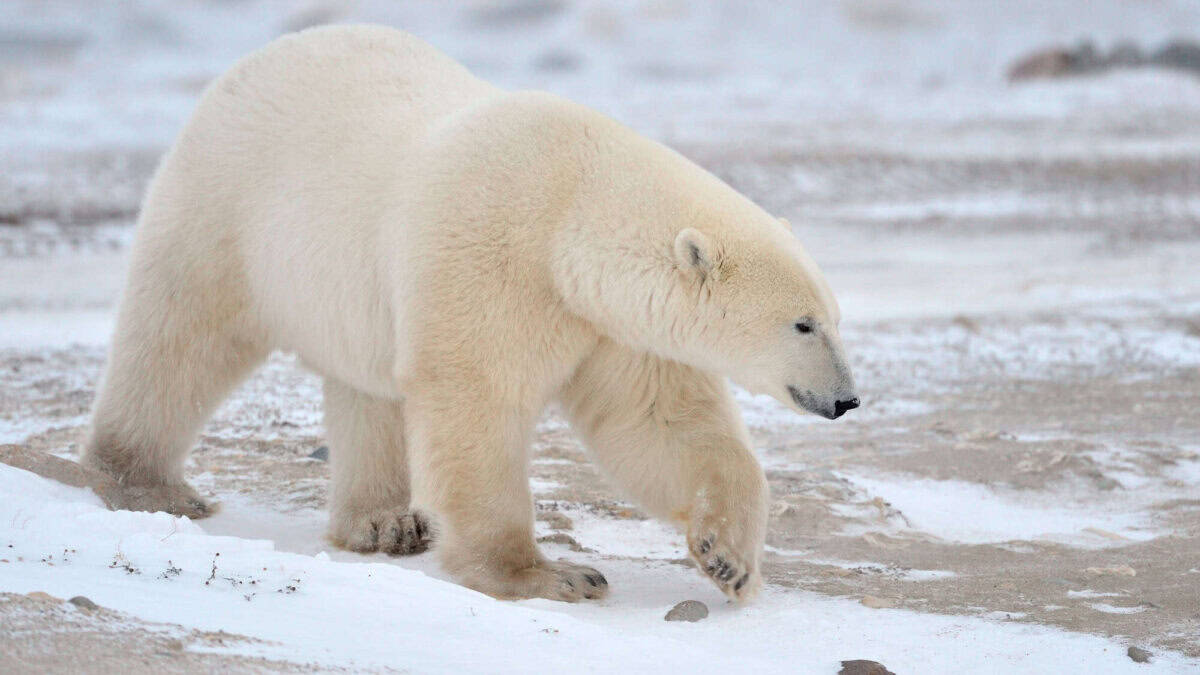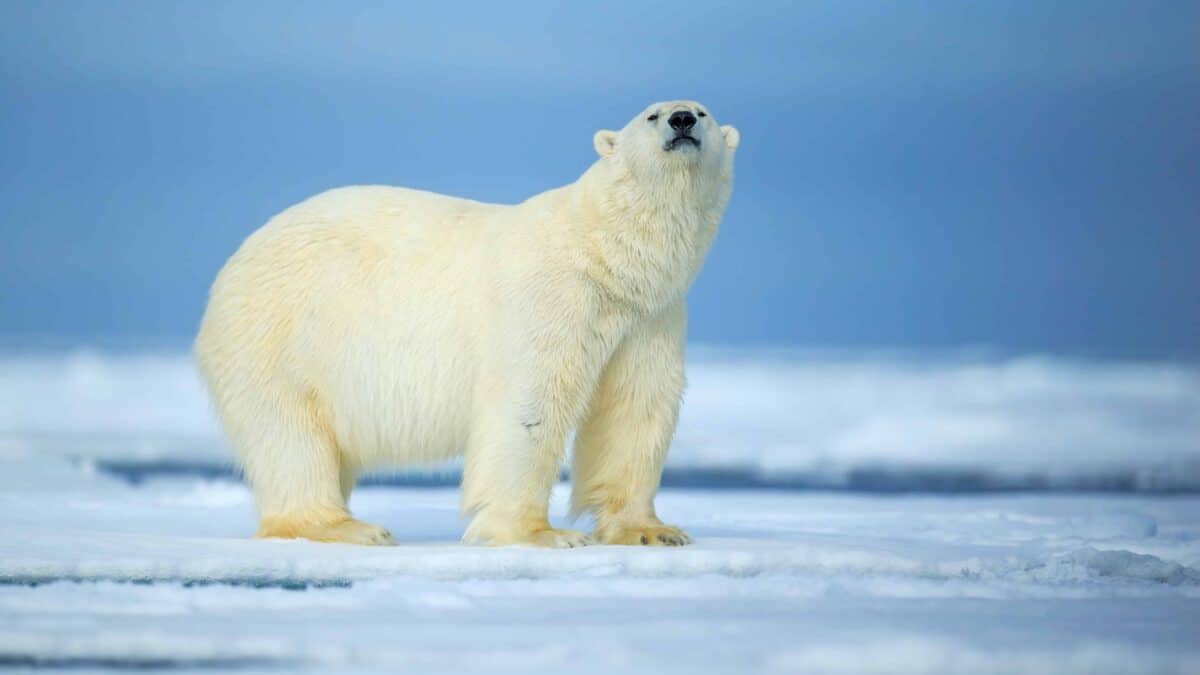In the vast, icy expanse of the Arctic, the polar bear reigns as the region’s apex predator. These magnificent creatures have evolved remarkable adaptations that allow them to thrive in one of Earth’s most extreme environments. Among their many hunting strategies, one behavior has particularly captured the imagination of naturalists and wildlife enthusiasts alike: the tendency of polar bears to cover their black noses while hunting. This fascinating behavior represents a sophisticated hunting strategy that showcases the bear’s intelligence and evolutionary adaptations. As we explore this phenomenon, we’ll uncover the science behind it, separate fact from fiction, and gain deeper insight into how these powerful predators survive in their harsh habitat.
The Polar Bear’s Camouflage Challenge

Polar bears (Ursus maritimus) possess a remarkable natural camouflage with their creamy white fur that blends seamlessly with their snowy surroundings. This adaptation serves them well as they stalk prey across ice floes and snow-covered landscapes. However, this otherwise perfect disguise has one notable flaw – their shiny black nose. Against the pristine white background of the Arctic, this dark feature stands out conspicuously, potentially alerting potential prey to the bear’s presence.
The contrast between their white fur and black nose presents a significant challenge for these predators when hunting. Seals, their primary prey, have excellent vision when they surface through breathing holes in the ice. Even from a distance, a seal might spot a dark object against the white landscape and recognize the danger, quickly retreating to the safety of the water. This single dark feature could be the difference between a successful hunt and going hungry in an environment where every meal matters for survival.
The Science of Arctic Predation

To understand why covering their nose might be advantageous, we must first understand polar bear hunting techniques. These carnivores employ a hunting strategy called “still-hunting” or “passive hunting,” where they wait motionlessly near breathing holes in the ice for seals to surface. Patience is crucial, as a polar bear may wait for hours before a seal appears. During this time, remaining undetected is paramount to success.
Research has shown that polar bears rely heavily on their visual camouflage when hunting seals. Studies conducted by scientists from the University of Alberta and the Norwegian Polar Institute have documented that successful hunts often depend on the bear remaining undetected until the critical moment when it can strike. Any feature that compromises this camouflage—such as a visible black nose—could significantly reduce hunting success rates in an environment where hunting is already challenging and energy-intensive.
Historical Observations and Traditional Knowledge

The behavior of polar bears covering their noses while hunting has been observed and documented by Indigenous peoples of the Arctic for generations. Inuit hunters and elders have passed down knowledge about polar bear behavior through oral traditions, noting the bear’s tendency to hide its nose when stalking prey. This traditional ecological knowledge predates modern scientific study and offers valuable insights into polar bear behavior that might otherwise be difficult to document in the remote Arctic environment.
Early European explorers and naturalists also recorded observations of this behavior in their journals and accounts of Arctic expeditions. These historical observations, combined with Indigenous knowledge, provide a foundation for understanding this adaptive behavior that has only recently been studied with modern scientific methods. This combination of traditional knowledge and scientific observation gives us a more complete picture of polar bear hunting strategies.
The Paw-Over-Nose Behavior

When a polar bear covers its nose while hunting, it typically does so by placing one of its front paws over its muzzle. This deliberate action conceals the dark feature that might otherwise give away its position. Wildlife photographers and researchers have captured this behavior on numerous occasions, providing visual evidence of this hunting strategy. The bear will often maintain this position for extended periods while waiting near a seal’s breathing hole or slowly stalking across the ice.
What makes this behavior particularly fascinating is its apparent intentionality. The bear seems to recognize that its nose compromises its camouflage and takes specific action to address this disadvantage. This suggests a level of self-awareness and problem-solving ability that speaks to the cognitive capabilities of these Arctic predators. The consistency with which this behavior has been observed across different polar bear populations suggests it may be an instinctive hunting strategy that has evolved over thousands of years.
Scientific Debate and Controversies

Despite numerous observations, there is ongoing scientific debate about whether polar bears consciously cover their noses as a hunting strategy. Some researchers suggest that what appears to be deliberate nose-covering may actually be a comfortable resting position, a method of conserving body heat, or a way to enhance their sense of smell by creating a small pocket of air around their nostrils. Without controlled studies, which are difficult to conduct in the wild, it’s challenging to definitively determine the bear’s intention.
Other scientists point out that the behavior is observed most frequently during hunting scenarios, suggesting it does serve a hunting-related purpose. A 2021 review published in the Journal of Zoology noted that while anecdotal evidence is strong, more systematic observation is needed to fully understand the function of this behavior. This scientific uncertainty reminds us that even well-known wildlife behaviors can contain mysteries that challenge our understanding of animal cognition and adaptive strategies.
Evolutionary Advantages of Nose-Covering

From an evolutionary perspective, any behavior that increases hunting success would be favored by natural selection. Polar bears evolved from brown bear ancestors approximately 150,000 to 600,000 years ago, adapting to the Arctic environment during this time. Their white coat is an obvious adaptation for camouflage, but their nose retained its dark coloration, likely because melanin (the pigment that gives the nose its black color) provides important protection against the harsh Arctic sun and cold temperatures.
The development of a behavioral adaptation—covering the nose—may have been an evolutionary compromise that allowed polar bears to maintain the protective benefits of a black nose while minimizing its disadvantage during hunting. This represents a fascinating example of how evolution can favor behavioral solutions to physical constraints. Rather than evolving a white nose, which might be vulnerable to sunburn and frostbite, the species developed a behavior that accomplishes the same camouflage goal while preserving the physiological benefits of a pigmented nose.
Comparing Polar Bears to Other Predators

The nose-covering behavior of polar bears invites comparison with the hunting strategies of other predators. Many predatory species have evolved specific adaptations or behaviors to enhance their hunting success. Tigers, for example, use their striped pattern for camouflage in tall grass and cover their reflective white ear spots with their paws when stalking prey. Arctic foxes change their coat color seasonally to maintain camouflage. What makes the polar bear’s strategy unique is its apparent use of a behavioral solution to compensate for a physical feature that can’t change.
Unlike many other predators that rely primarily on scent or sound to locate prey, polar bears depend heavily on visual stalking techniques when hunting seals at breathing holes. This hunting method, combined with the extreme visual contrast between the Arctic environment and any dark object, may explain why polar bears have developed this specific adaptive behavior. It represents a specialized solution to the unique challenges of hunting in the Arctic’s open, snow-covered landscape.
Technological Confirmation of the Behavior

Advanced wildlife monitoring technologies have provided new opportunities to study polar bear hunting behavior. Remote cameras, drone footage, and thermal imaging have all contributed to documenting the nose-covering behavior in natural settings without human interference. These technologies allow researchers to observe hunting behaviors that might otherwise be disturbed by human presence and provide valuable data about the frequency and context of nose-covering.
A particularly notable study conducted by researchers from the University of Washington used remote time-lapse cameras positioned near known seal breathing holes to capture polar bear hunting behavior. The footage confirmed multiple instances of bears covering their noses while in hunting positions. Additionally, thermal imaging has shown that the black nose is significantly warmer than the surrounding fur, making it potentially visible to prey not just because of its color but also its heat signature—adding another dimension to understand why concealing it might be advantageous.
Climate Change Impacts on Hunting Behavior

The rapidly changing Arctic environment due to climate change presents new challenges for polar bear hunting strategies. As sea ice diminishes in extent and duration, polar bears face longer periods without access to their primary hunting grounds. This environmental stress may influence hunting behaviors, potentially including the frequency of nose-covering as bears attempt to maximize hunting success during the shortened ice season.
Researchers from the U.S. Geological Survey and the Canadian Wildlife Service have documented changes in polar bear hunting patterns as the ice season shortens. Bears are spending more energy trying to catch seals in less optimal conditions, and any behavior that increases hunting efficiency becomes even more critical for survival. Monitoring how these specialized hunting behaviors might adapt or become more frequent in response to climate pressures provides valuable insights into the behavioral plasticity of the species and their ability to adapt to rapid environmental change.
Cultural Significance of the Behavior

The image of a polar bear covering its nose has captured popular imagination and become embedded in cultural representations of these iconic Arctic predators. This behavior is often featured in nature documentaries, wildlife photography, and educational materials about polar bears. It has become a symbol of the species’ intelligence and adaptability, helping to generate public interest in polar bear conservation efforts and raising awareness about the challenges these animals face in a warming Arctic.
Indigenous cultures of the Arctic have incorporated observations of polar bear hunting behavior into their traditional stories, art, and hunting practices. The Inuit people, who have coexisted with polar bears for thousands of years, hold these animals in high regard, considering them to be wise and worthy opponents in the hunt. Their detailed knowledge of polar bear behavior, including the nose-covering strategy, informs both their hunting practices and cultural understanding of these apex predators, creating a rich tapestry of human-wildlife relationships in the Far North.
Teaching the Behavior to Cubs

Polar bear cubs stay with their mothers for approximately 2-3 years, during which they learn essential survival skills, including hunting techniques. Researchers have observed mother bears demonstrating the nose-covering behavior while hunting with cubs present, suggesting this strategy may be passed down through observational learning. Cubs have been documented mimicking their mother’s behavior, including the placement of a paw over the nose when in hunting positions near seal breathing holes.
This intergenerational transmission of knowledge highlights the importance of extended maternal care in polar bear society. It also underscores the complexity of polar bear behavior and the role of learning in developing effective hunting strategies. Unlike purely instinctual behaviors, techniques that are refined through observation and practice represent a more sophisticated form of adaptation that can respond to changing conditions within a bear’s lifetime. This ability to learn and pass down effective hunting strategies may be crucial for the species’ resilience in the face of environmental challenges.
Conclusion: A Remarkable Adaptation Worth Protecting

The polar bear’s practice of covering its black nose while hunting exemplifies the remarkable adaptations that allow wildlife to thrive in challenging environments. Whether this behavior is fully conscious or partly instinctual, it represents an ingenious solution to a specific challenge of Arctic hunting. As we continue to study and understand these magnificent predators, each insight into their behavior deepens our appreciation for their evolutionary journey and specialized adaptations.
The future of polar bears and their specialized hunting behaviors remains uncertain in the face of rapid climate change and shrinking sea ice habitat. Conservation efforts aimed at protecting Arctic ecosystems and addressing climate change are essential to ensuring that future generations can witness these incredible adaptive behaviors firsthand. The image of a polar bear with a paw carefully placed over its nose serves as a powerful reminder of both the intelligence of these animals and the delicate balance of the ecosystems they inhabit.
As research technologies advance and our understanding grows, we may uncover even more nuances to this fascinating behavior. What remains clear is that the polar bear’s ability to adapt, both physically and behaviorally, to one of Earth’s most extreme environments makes it one of nature’s most impressive success stories – a story of survival, intelligence, and the endless ingenuity of evolutionary adaptation. These remarkable creatures continue to capture our imagination while reminding us of the wonders that can evolve when nature presents a challenge that must be overcome.
By protecting polar bears and their Arctic habitat, we preserve not just an iconic species but also the opportunity to continue learning from their remarkable adaptations and behaviors. Each discovery about their hunting strategies, including the nose-covering behavior, contributes to our broader understanding of animal cognition, evolutionary processes, and the complex relationships between predators and their environment. This knowledge enriches our appreciation of the natural world and inspires continued conservation efforts for these magnificent Arctic hunters.
- Why Polar Bears Cover Their Black Noses While Hunting - August 15, 2025
- How Snakes Became a Central Theme in Chinese Zodiac Legends - August 15, 2025
- Can Animals Predict Earthquakes? The Science Behind the Mystery - August 15, 2025

